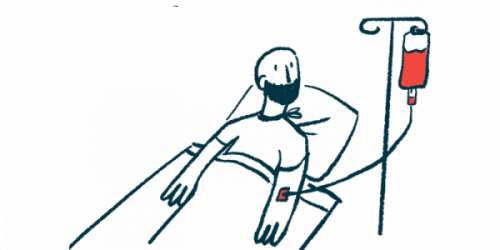Nexviazyme not linked to new or worsening diabetes: Study
Concerns have been raised about the use of dextrose during infusions

Sanofi’s Nexviazyme (avalglucosidase alfa), an enzyme replacement therapy approved for Pompe disease, doesn’t appear to be linked to new or worsening diabetes, a concern raised by the presence of dextrose, a simple sugar, in the solution for infusion.
In a study funded by Sanofi, researchers also didn’t find evidence of insulin resistance, which occurs when cells stop responding well to the hormone, which is produced in the pancreas and helps cells take up sugar from the bloodstream. The study, “Real-world evidence study finds no new-onset diabetes or drug-related hyperglycemia in Pompe disease patients treated with avalglucosidase alfa,” was published in Molecular Genetics and Metabolism Reports.
Pompe disease is caused by mutations in the gene that codes for producing alpha-glucosidase, an enzyme that breaks down glycogen into glucose. Glygogen is a complex sugar molecule, while glucose is a simple sugar that acts as a primary source of energy.
When glycogen isn’t broken down, it can build up to toxic levels in tissues, particularly muscles, causing damage. As a result, people with Pompe disease have a range of symptoms, from muscle weakness to trouble breathing and an enlarged heart.
Nexviazyme, marketed as Nexviadyme in Europe, contains a version of alpha-glucosidase that can be given once every two weeks to provide a working enzyme. How much Nexviazyme is given depends on a patient’s body weight. Because it’s a powder, it must be mixed with sterile water for reconstitution and then diluted in a solution containing 5% dextrose for infusion into the bloodstream.
A downside to dextrose in Nexviazyme?
Dextrose is chemically identical to glucose. Like glucose, it can rapidly increase blood sugar levels, causing hyperglycemia. When sugar levels are higher than normal, but not high enough for a diagnosis of diabetes, a patient is said to have prediabetes.
Using dextrose “has raised concern among healthcare providers and patients regarding the potential for hyperglycemia or worsening diabetes in patients who have Pompe disease and preexisting diabetes mellitus, insulin resistance or prediabetes,” wrote the researchers, who collected insurance claim records from Optum’s Clinformatics Data Mart database about people with Pompe disease in the U.S. who’d received up to 19 infusions of Nexviazyme to see if dextrose may cause new or worsening diabetes.
Of the 26 patients identified, one had an episode of hyperglycemia after starting Nexviazyme. The patient’s hyperglycemia was likely caused by acute pancreatitis, a sudden inflammation of the pancreas that can raise blood sugar levels, however.
The researchers calculated that for a patient of average weight — 70 kg, or 154 pounds — an infusion of Nexviazyme would provide about 18 g of dextrose. Because the infusion usually takes about four to six hours, this would amount to 5 g of dextrose per hour, at most, or about one teaspoon of sugar per hour.
Nexviazyme’s label “does not contain recommendations for managing patients with diabetes receiving avalglucosidase alfa infusions,” the researchers wrote. “Therefore, management of such patients is at the discretion of the treating or diabetes-managing clinician and/or an infusion center’s internal protocols.”







